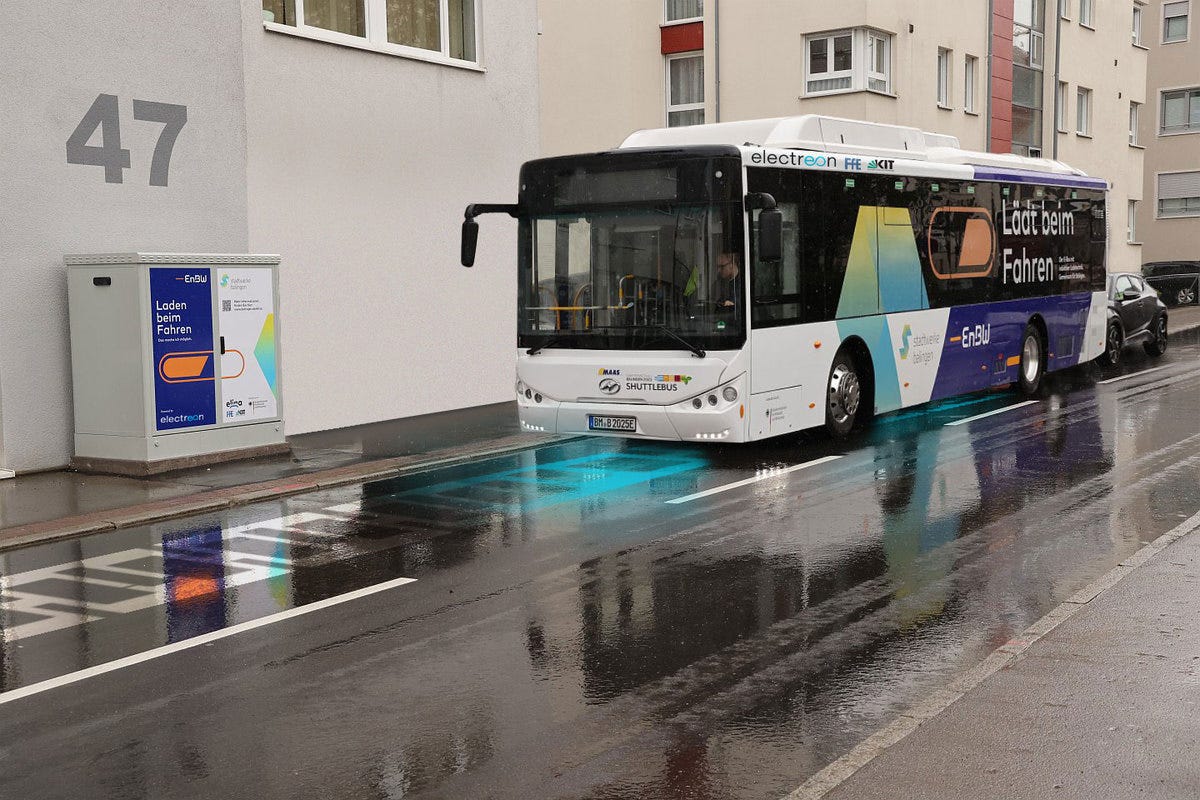You may never need to plug in your EV if these ideas take off

San Francisco-based Ample is working on battery-swapping stations that drop refueling times to just five minutes.
Ample
Long charging times and a lack of public chargers are keeping people from buying electric cars.
Some startups are convinced that EV charging needs a fundamental overhaul.
Battery swapping and wireless EV charging could someday make owning an EV way more convenient.
The thought of charging is scaring away potential electric car buyers. If everybody is expected to shun dirty fuels sooner rather than later, that needs to change.
Sure, automakers can tackle the frustratingly long duration of charging stops by engineering cars that recharge more quickly and drive farther between fill-ups. Charging providers can put anxious drivers at ease by blanketing the country with a greater number of more reliable stations. And that’s all happening.
But some startups are convinced the way we refuel EVs needs a complete overhaul.
When a battery dies, swap it
San Francisco-based Ample’s pitch is simple: Instead of spending precious time waiting around to refill the same battery over and over, why not simply change it out for a fresh pack and be on your way?
Ample says its new stations, seen here in a rendering, can swap a battery in five minutes.
Ample
Ample’s drive-through battery-swapping stations, roughly the size of a few parking spaces, are where the magic happens. After a driver pulls into a stall, their vehicle is lifted up and machinery below springs into action, autonomously plucking out the depleted pack and replacing it with a fully charged one in minutes. That’s a game-changing improvement over typical fast-charging stations, where getting a solid charge could take 30 minutes to an hour or more.
The firm is still in its very early days, but its tech is already in the hands of some Uber drivers in California thanks to a deal with the ride-hailing giant. Ample plans to focus on taxi, delivery, and car-rental fleets before turning its attention to regular consumers.
You won’t be able to pull up to an Ample station in just any EV — it’ll need to be outfitted with the startup’s modular, removable battery packs. The company plans to accomplish that through partnerships with automakers.

The Ample station lifts vehicles up to gain access to their undersides.
Ample
Given our currently limited infrastructure and technology, EVs work best for people who don’t drive very far in a day and can charge at home. Quick, convenient, and cheap battery swapping will be key for getting everyone else on board, John de Souza, Ample’s cofounder and president, told Insider.
“If you don’t have the luxury of having a parking garage overnight, it starts falling apart,” he said, referring to EV ownership. “Or if you drive a lot of miles, it falls apart.”
Ample offers more than just speedy pit stops, de Souza said. Under the company’s model, customers will buy a battery-less vehicle and then pay a battery subscription, potentially slashing the upfront cost of going electric. Battery swapping should extend vehicle longevity by cutting down on fast-charging sessions, which accelerate battery wear, and by letting owners keep up with the latest advances in battery chemistry, de Souza said.
Chinese startup Nio has sold cars with swappable batteries for years while building out the infrastructure to support them — first in its homeland and now in Europe. Stateside, widespread battery swapping still looks a long way off, but it’s gaining momentum. US EV startup Fisker recently announced plans to offer Ample’s tech in its Ocean SUV starting in 2024.
Electric cars, meet electric roads
For Israel’s Electreon, the path toward an EV future is paved with roads that wirelessly recharge vehicles while they’re moving.

Electreon has launched several projects providing wireless charging for buses.
Electreon
The tech may sound like something straight out of science fiction, but it’s real. Electreon’s initial projects mainly bring wireless charging to public buses — vehicles with predictable routes and depots ripe for reinvention. But it’s not stopping there.
Oren Ezer, Electreon’s cofounder and CEO, told Insider that wireless charging could solve the biggest challenges stunting the EV revolution: insufficient charging infrastructure, limited driving range, and a reliance on large, expensive batteries. In a world where electrified bus stops, parking spots, and streets charge vehicles all the time, those sticking points recede into the rearview. That’s the long-term vision, anyway.

Electreon drove a
Toyota RAV4 more than 1,200 miles without stopping.
Electreon
To demonstrate the transformative potential of so-called “dynamic wireless charging,” Electreon in May set out to drive a Toyota RAV4 Prime — a plug-in hybrid with just 42 miles of electric-only range — for 100 hours straight without plugging in or using any gas.
On a test track with its copper charging coils embedded in the asphalt, Electreon and a team of 55 drivers covered 1,207 miles, a feat that would be unthinkable in a typical EV. (The cream of today’s electric crop can travel 300-500 miles before they need to stop and recharge.)
The SUV, specially outfitted to receive energy wirelessly, looped the track at around 20-30 mph, Ezer said. He added that even at highway speeds, Electreon’s roads can keep a vehicle’s battery topped up indefinitely.

Electreon digs a shallow trench to install its charging coils.
Electreon
Before you shudder at the prospect of endless, invasive construction if this tech takes off, consider this: Electreon says it can lay 1 mile of road in a night. It doesn’t need to rip up an entire street, Ezer said, just dig a trench about three inches deep.
Despite the billions pouring into conventional charging infrastructure, Ezer thinks his technology will win out someday. One positive sign: In March, Electreon announced an R&D partnership with Toyota.
“We need all the solutions together in order to accelerate the adoption of electric vehicles,” he said. “But wireless will be dominant for sure.”



